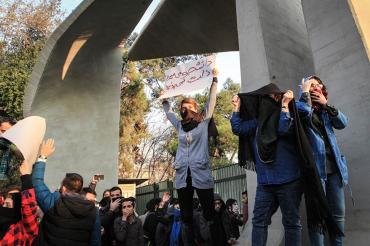What were the Iran protests really about? U of T experts decided to find out

Published: January 29, 2018
Why did so many Iranians take to the streets for demonstrations in late December and early January? And did the protests that took place in 80 cities and towns have widespread support in Iran?
Experts at the University of Toronto decided to ask the only people who could really answer these questions – Iranians themselves.
In an opinion piece published in the Globe and Mail, Peter Loewen, the director of the School of Public Policy & Governance at the University of Toronto, Janice Stein, the founding director of U of T’s Munk School of Global Affairs, and Farhaan Ladhani, the director of the Digital Public Square at the Munk School, outlined how they were able to do so.
"The Digital Public Square at the Munk School at the University of Toronto partners with a Canadian technology firm, RIWI, which uses an 'intercept' method to survey individuals in any country that has internet access," the authors write. In the end, they were able to survey 1,054 Iranian adults between Jan. 5 and 9
The results: "The protesters and their supporters are still very much in the minority," the authors write. The survey found only 27 per cent of respondents agreed when asked if they supported the protesters. Forty-five per cent disagreed, with 30 per cent saying they neither agreed nor disagreed.
The survey also found that the Iranians who supported the protests did so for three major reasons: "a lack of confidence in the government, a belief that corruption is rampant and, in a result that surprised us, a belief that life was better before the revolution."


